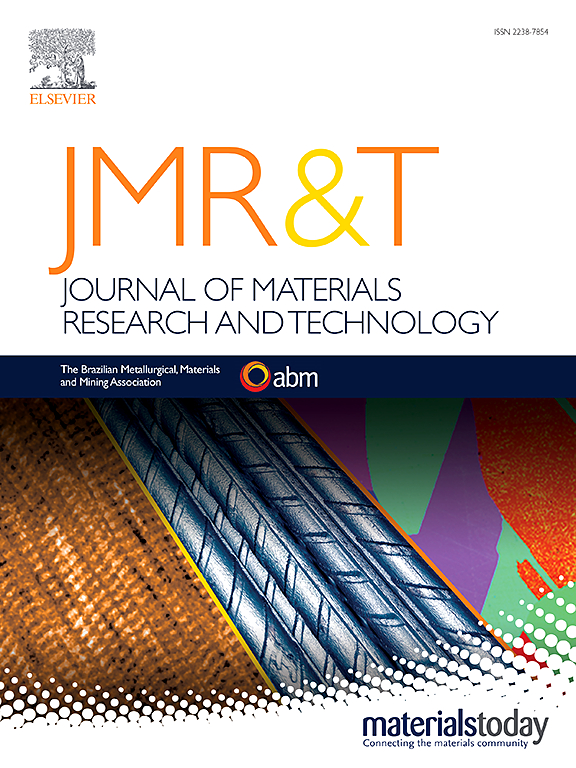Phase constitution, microstructure and corrosion performance of binary Sn–Bi alloys
IF 6.2
2区 材料科学
Q1 MATERIALS SCIENCE, MULTIDISCIPLINARY
Journal of Materials Research and Technology-Jmr&t
Pub Date : 2025-03-08
DOI:10.1016/j.jmrt.2025.03.069
引用次数: 0
Abstract
In the present paper, the phase constitution, microstructure, and corrosion behavior of a series of binary Sn–xBi alloys (x = 40, 57 and 80 wt%) have been studied. The materials were prepared by induction melting of high purity Bi and Sn lumps in argon. Subsequently, the alloys were rapidly solidified to form cast ingots. The as-cast Sn–57Bi alloy had a near-eutectic microstructure. The as-cast Sn–40Bi alloy consisted of dendritic Sn(ss) and eutectic grains, while the as-cast Sn–80Bi alloy consisted of dendritic Bi(ss) and eutectic. The corrosion behavior of the alloys was studied by open circuit potential measurements (OCP) and linear sweep voltammetry in an aqueous NaCl solution (1 wt%). The experiments were carried out at room temperature in a three-electrode cell controlled by a potentiostat. The results were compared with those for pure Sn and Bi. The open circuit potentials of the Sn–Bi alloys increased in the following order: Sn < Sn–80Bi < Sn–40Bi < Sn–57Bi < Bi. The corrosion currents of the hypoeutectic Sn–40Bi and hypereutectic Sn–80Bi alloys were found to be higher compared to Sn–57Bi alloy. These results indicate that the near-eutectic Sn–57Bi alloy has a higher corrosion resistance compared to the Sn–80Bi and Sn–40Bi alloys. The corrosion behavior of the binary Sn–Bi alloys was found to take place by a galvanic mechanism. The eutectic regions in the alloys were preferentially attacked. Corrosion products on the alloy surfaces were identified using a combination of SEM/EDS and room-temperature XRD. The results are compared with those of previously studied Sn–Bi alloys. The corrosion mechanism is discussed.
求助全文
约1分钟内获得全文
求助全文
来源期刊

Journal of Materials Research and Technology-Jmr&t
Materials Science-Metals and Alloys
CiteScore
8.80
自引率
9.40%
发文量
1877
审稿时长
35 days
期刊介绍:
The Journal of Materials Research and Technology is a publication of ABM - Brazilian Metallurgical, Materials and Mining Association - and publishes four issues per year also with a free version online (www.jmrt.com.br). The journal provides an international medium for the publication of theoretical and experimental studies related to Metallurgy, Materials and Minerals research and technology. Appropriate submissions to the Journal of Materials Research and Technology should include scientific and/or engineering factors which affect processes and products in the Metallurgy, Materials and Mining areas.
 求助内容:
求助内容: 应助结果提醒方式:
应助结果提醒方式:


